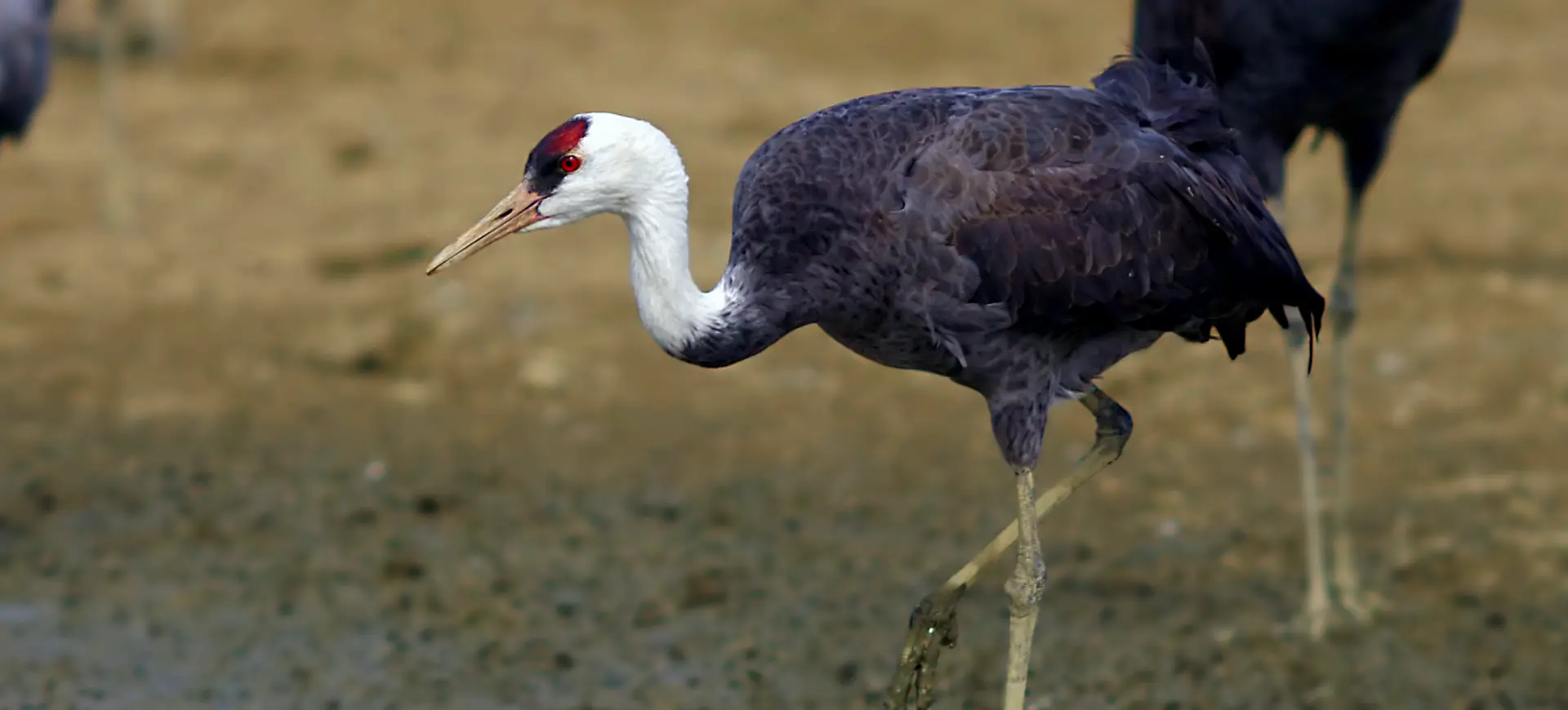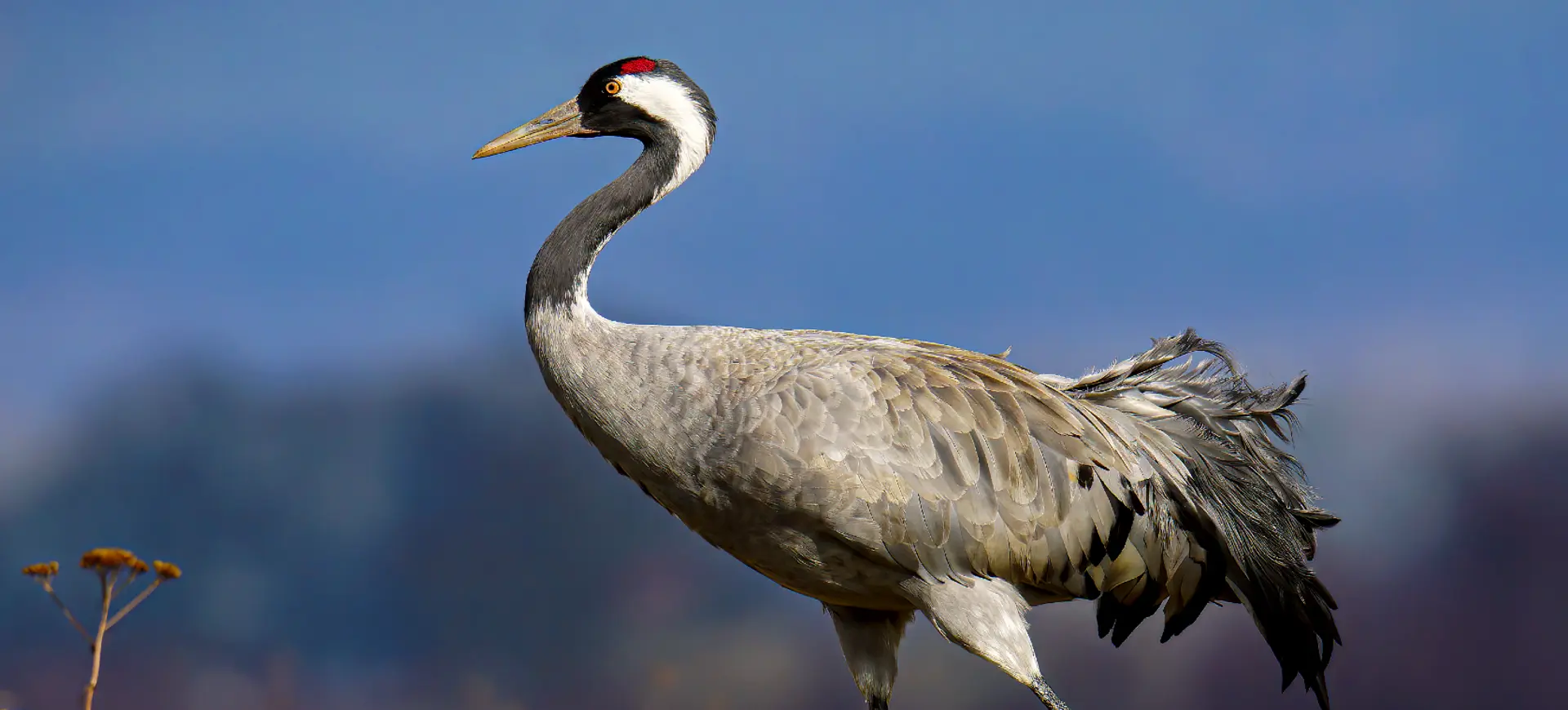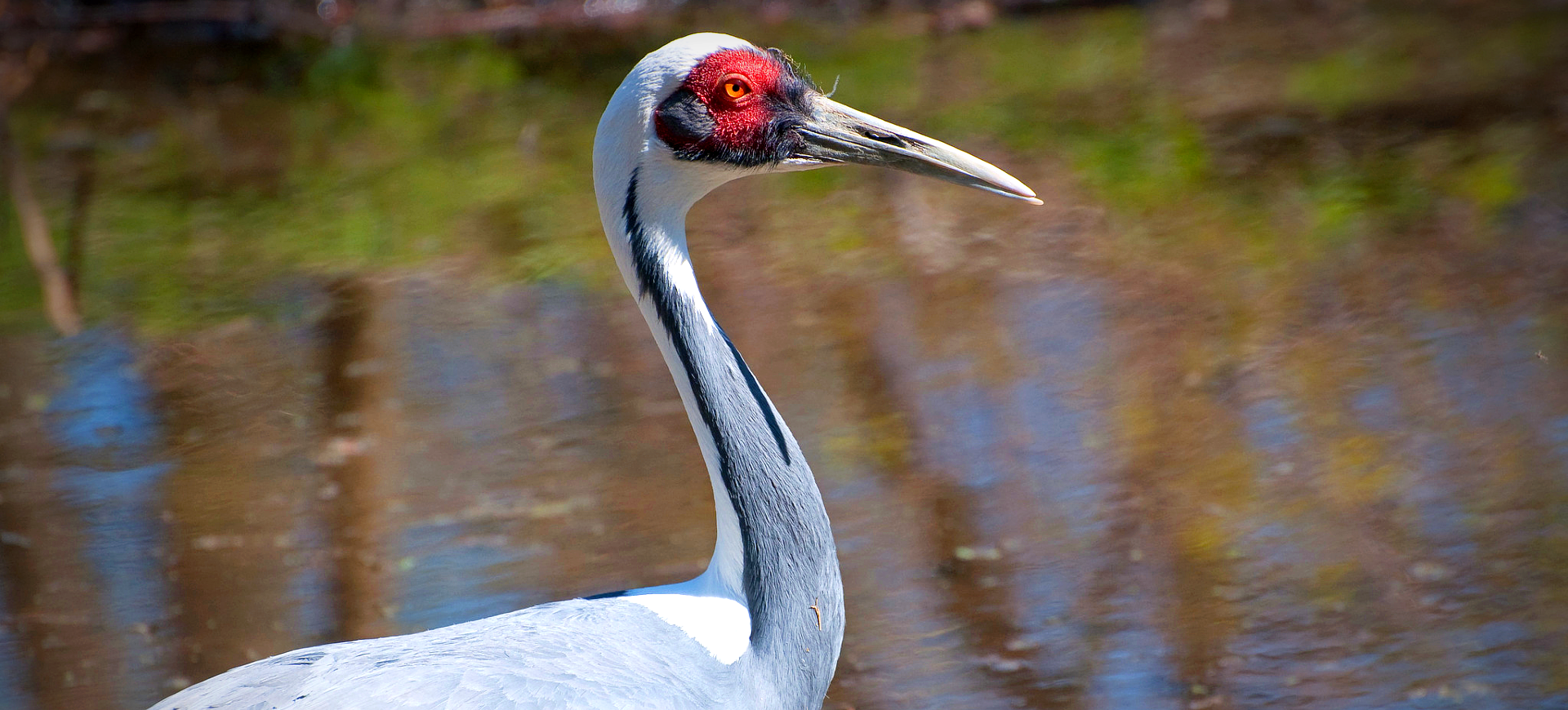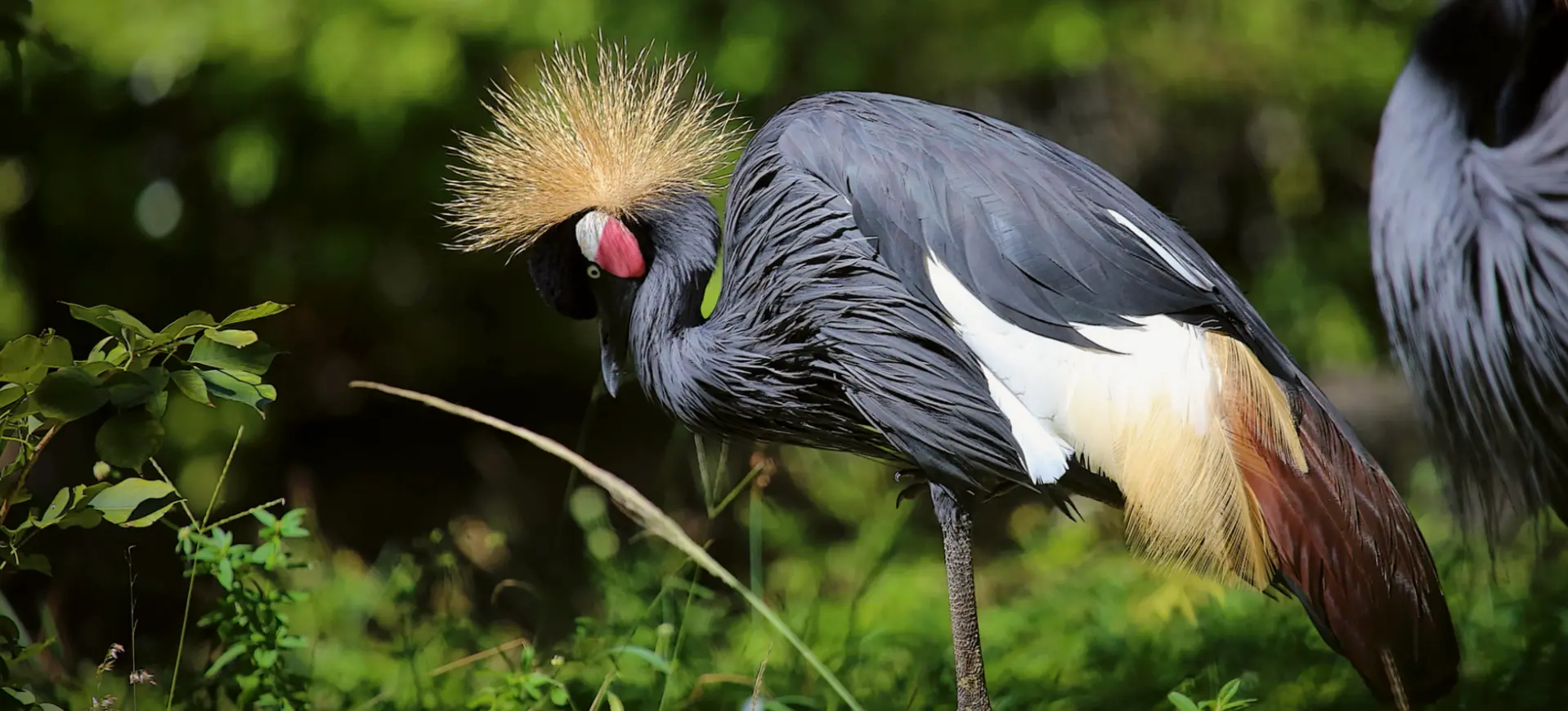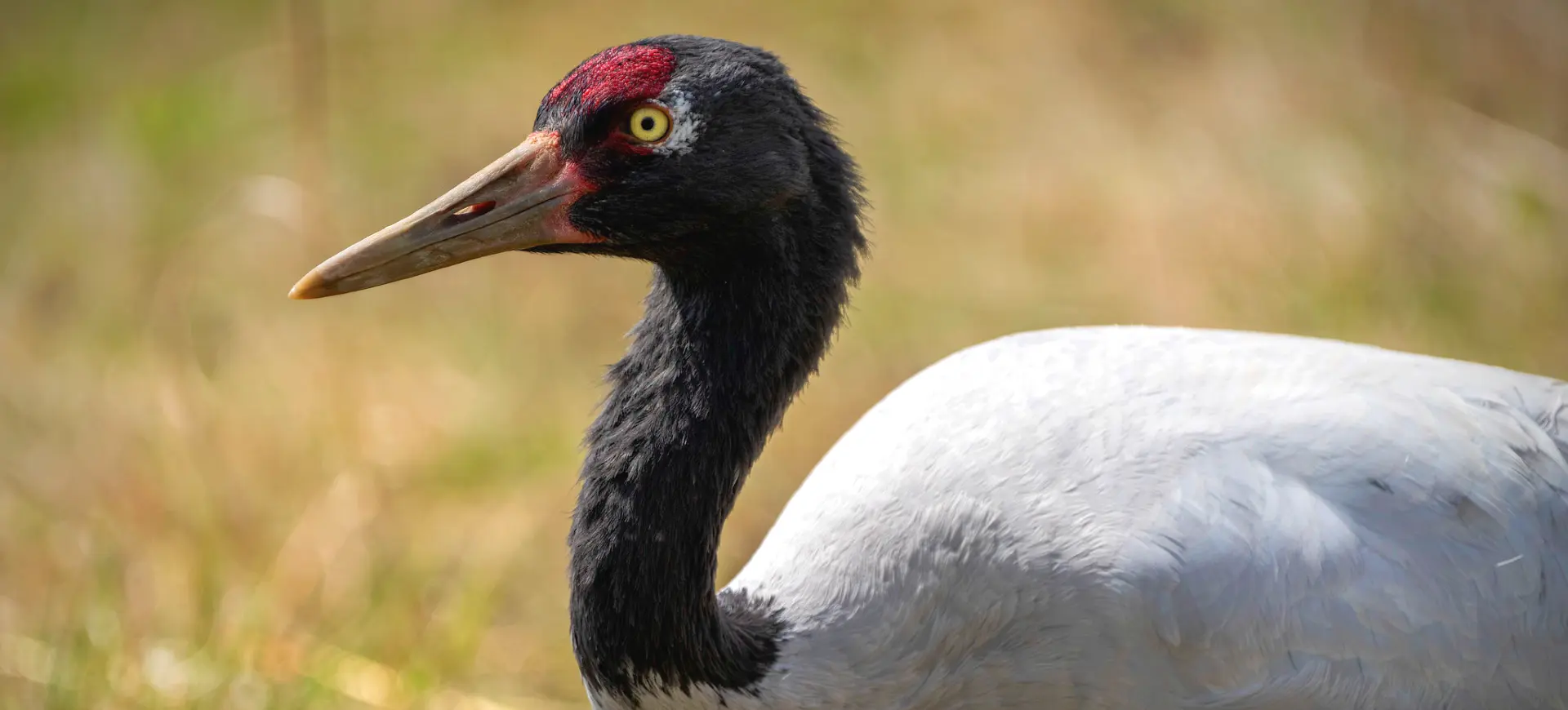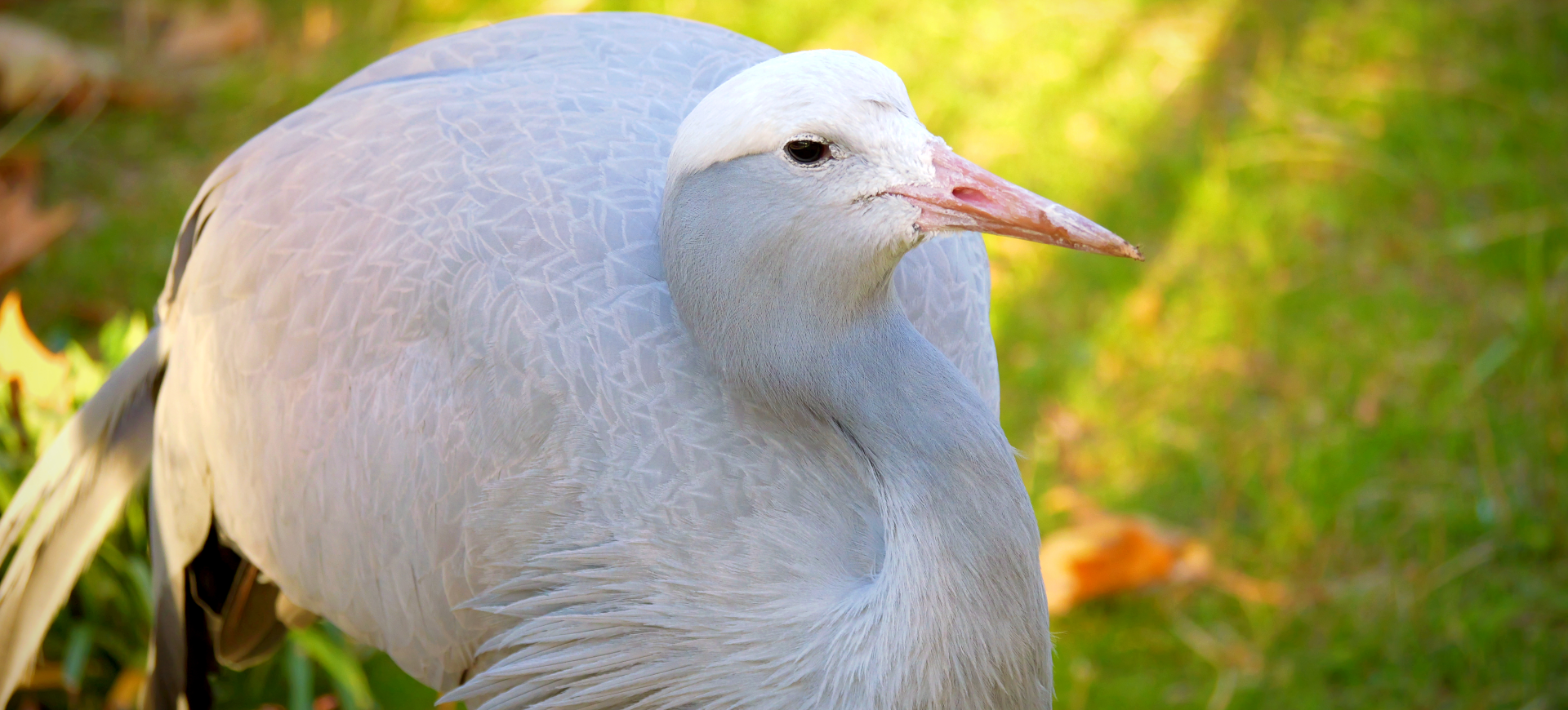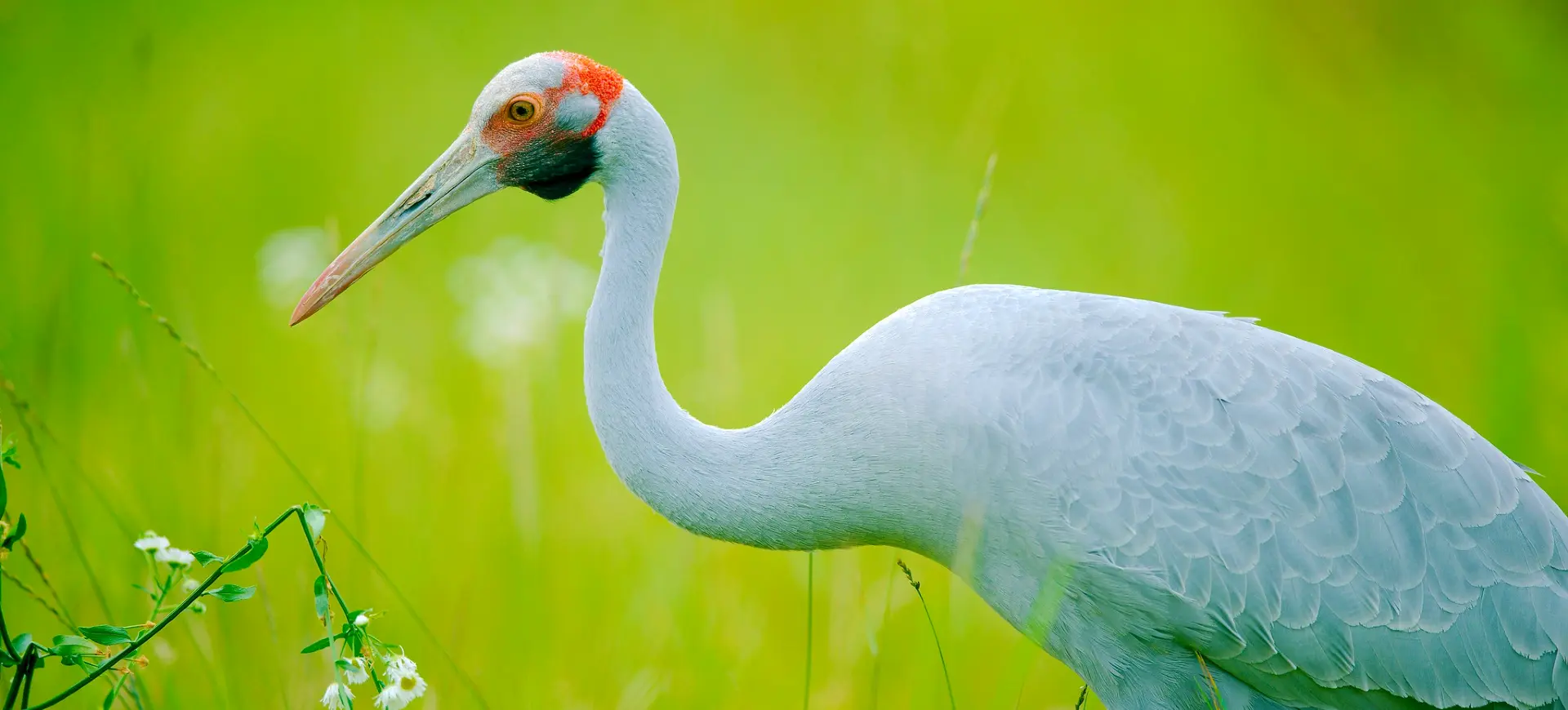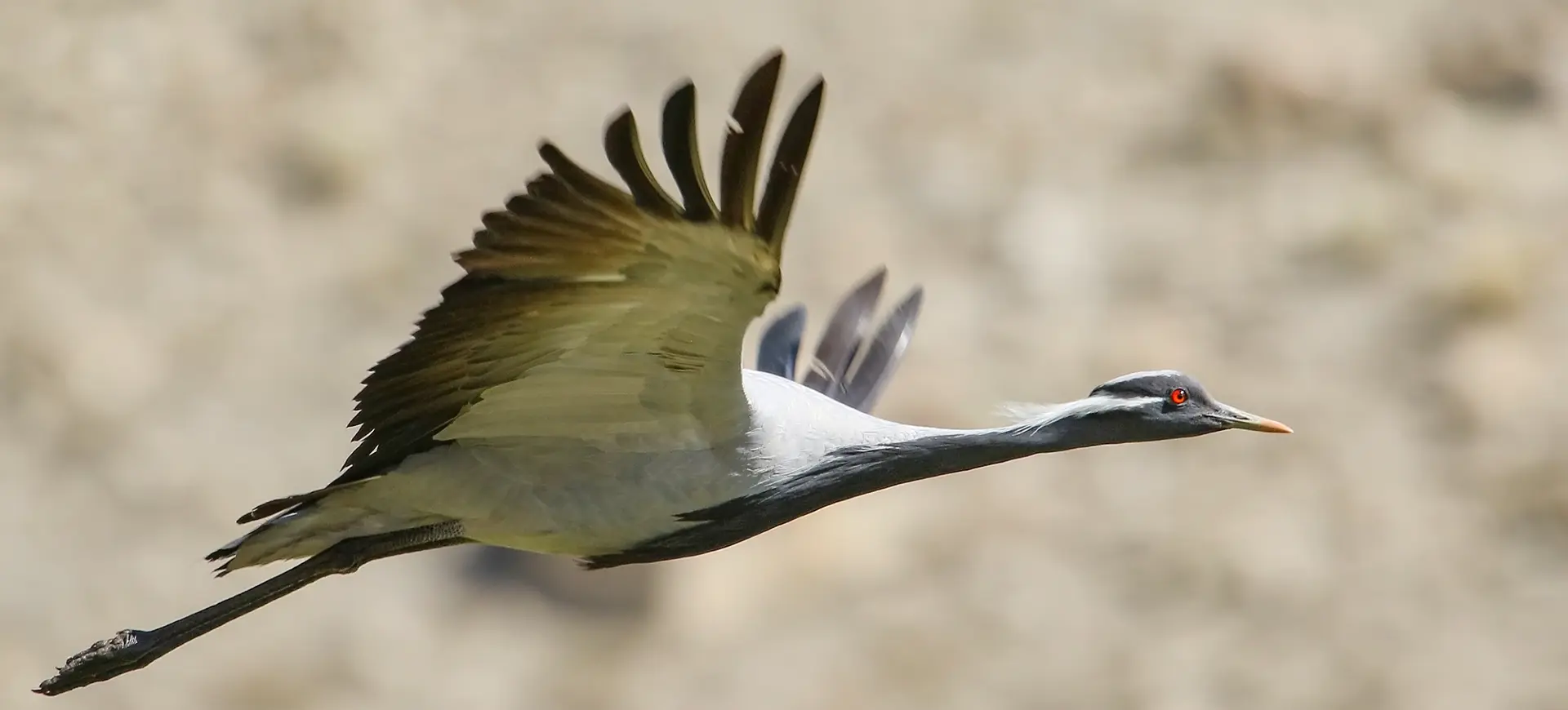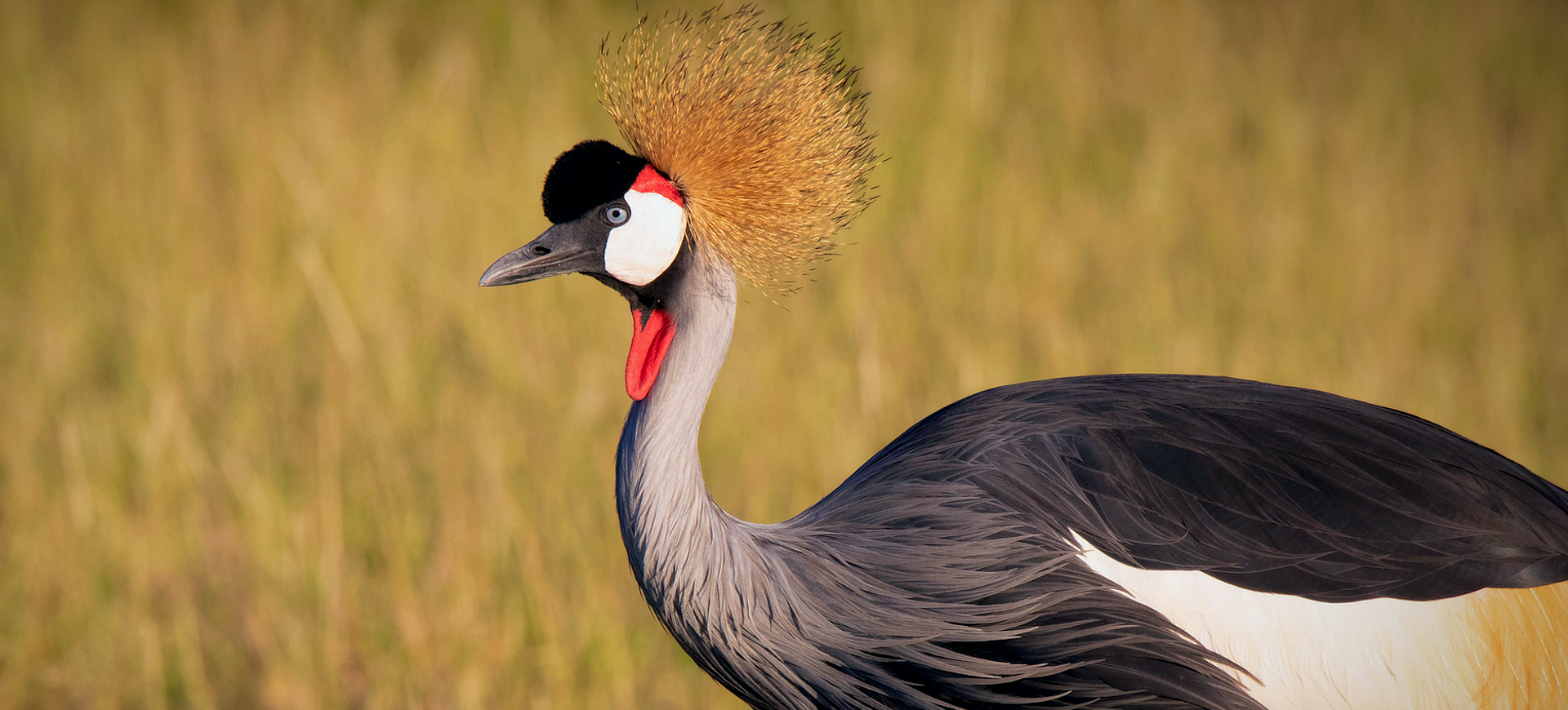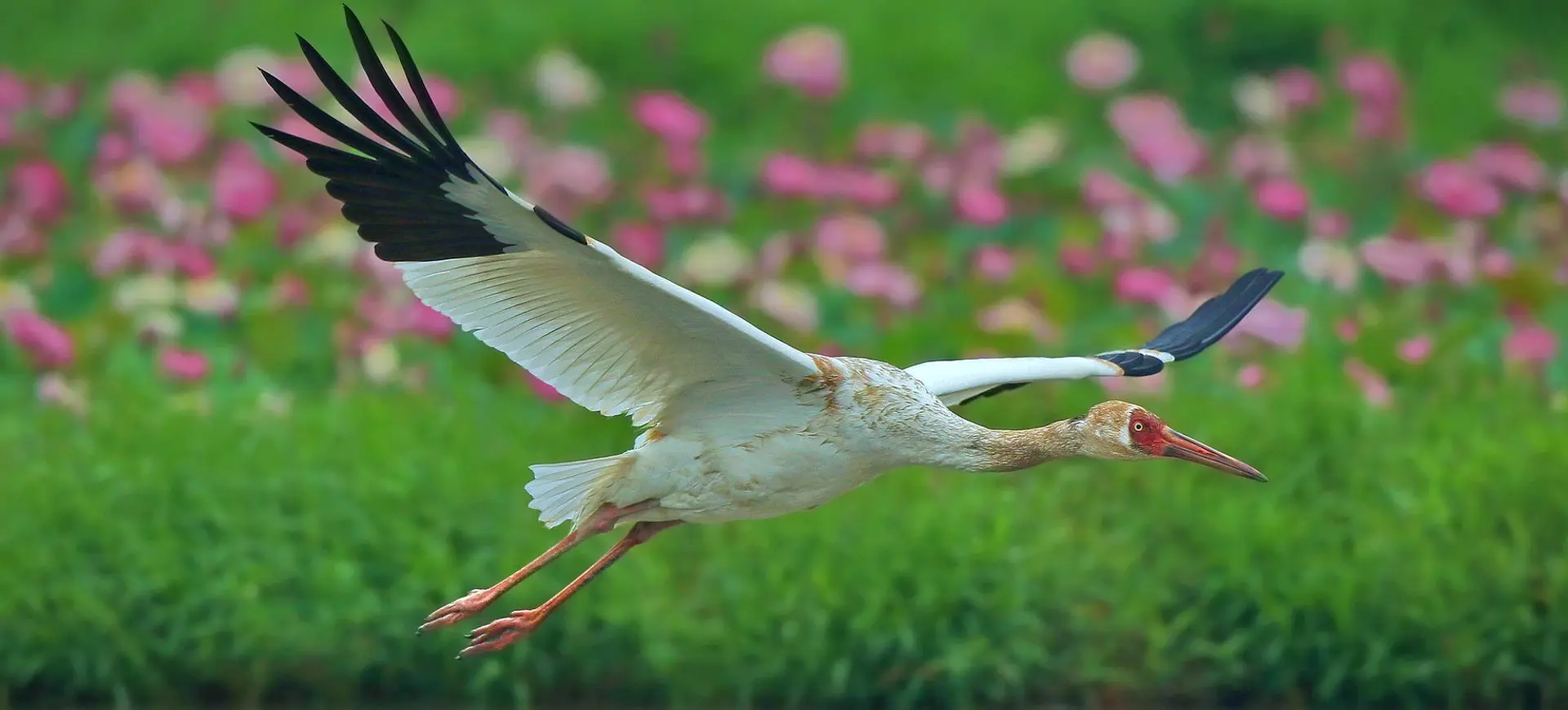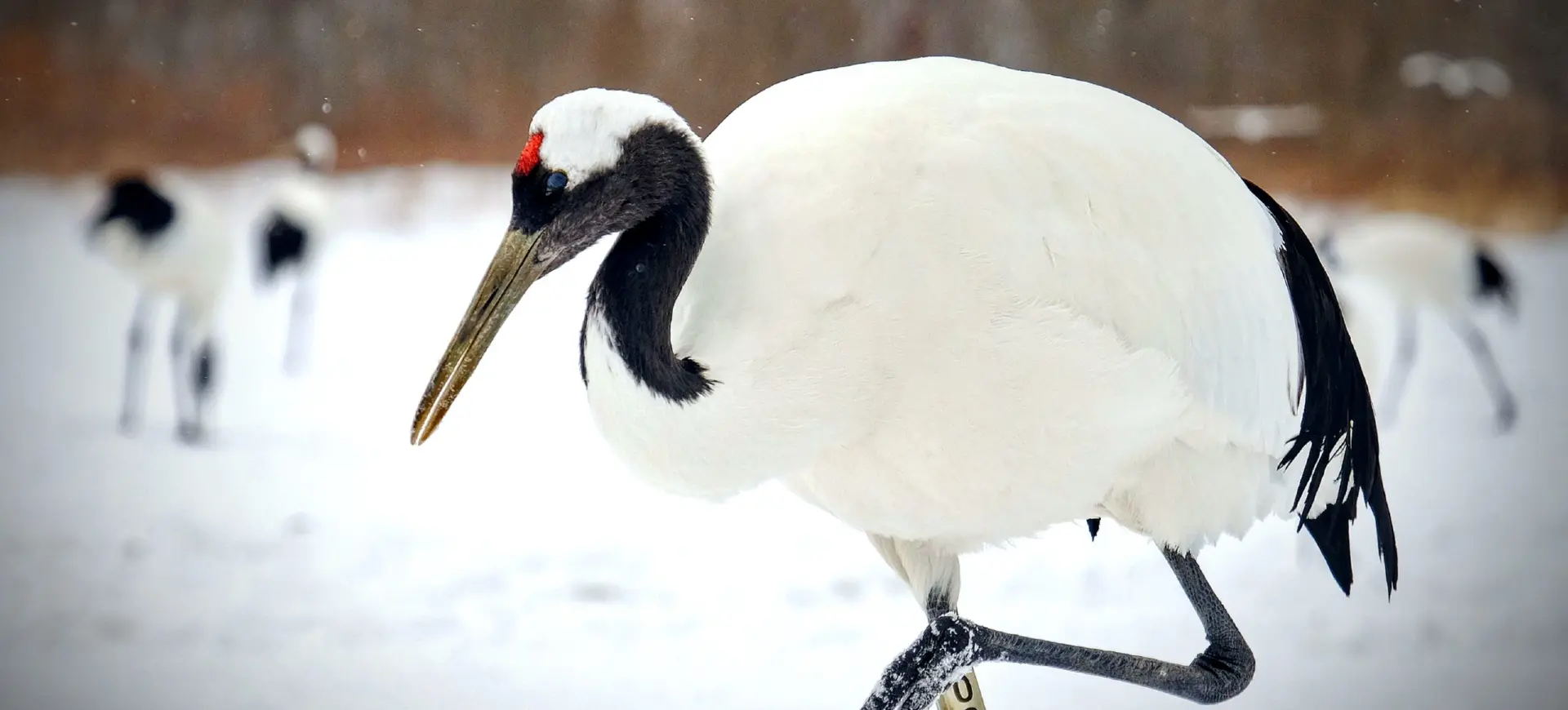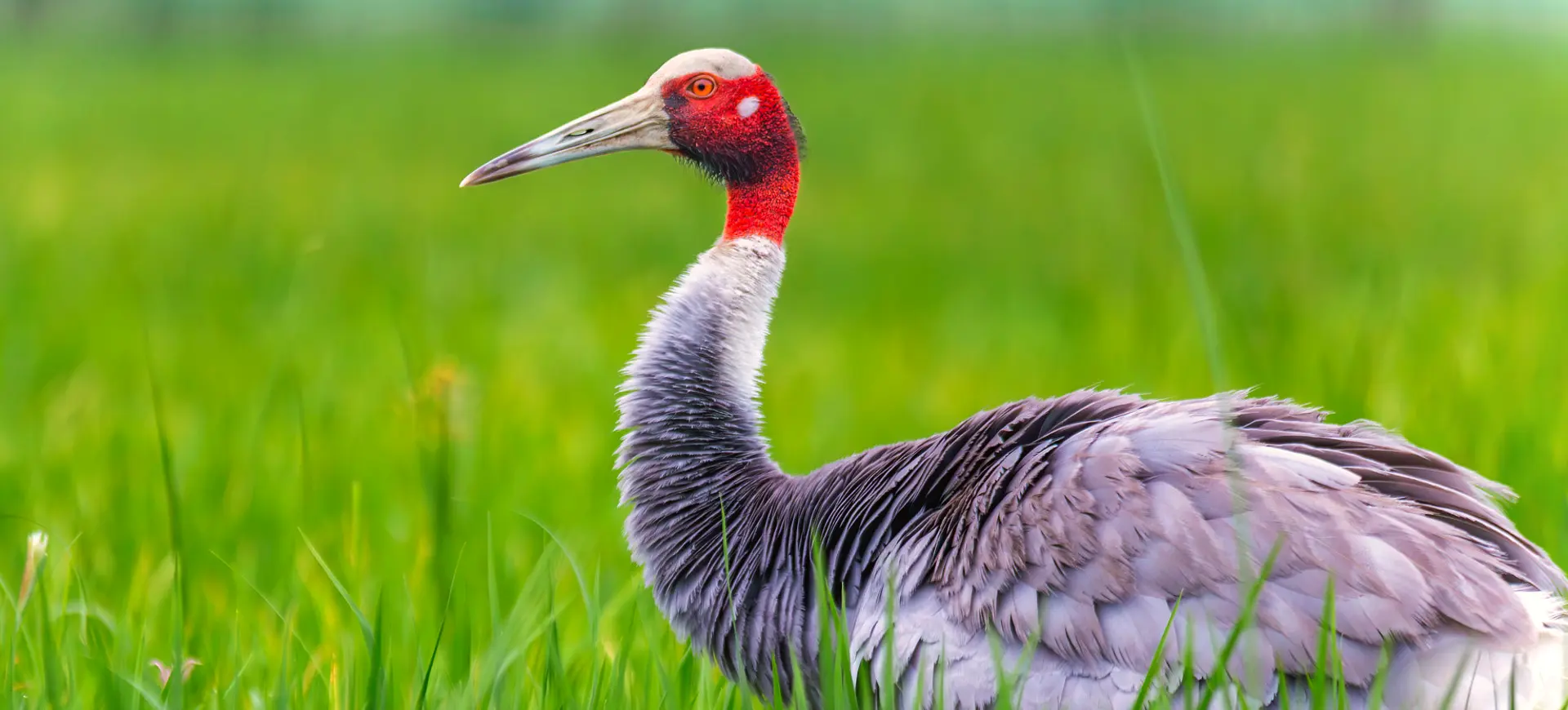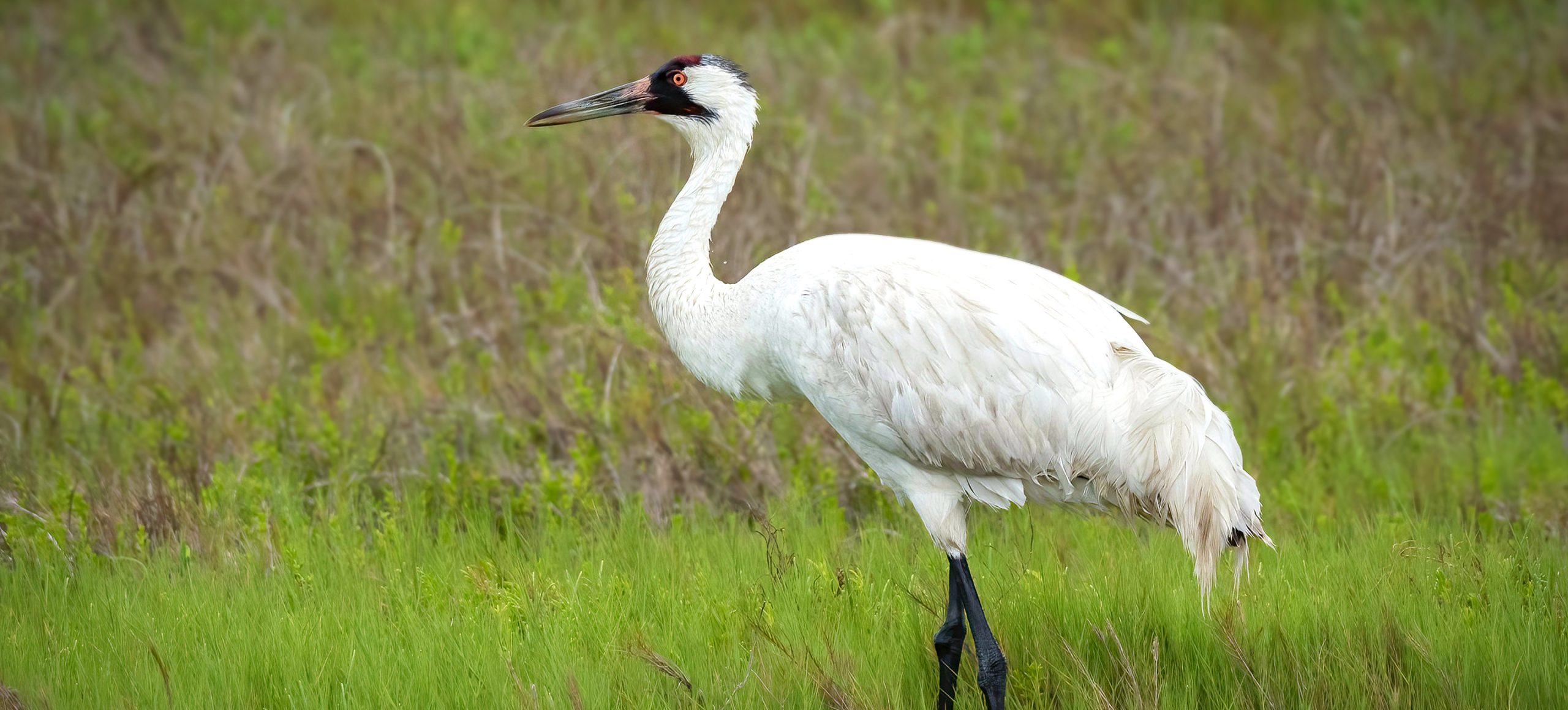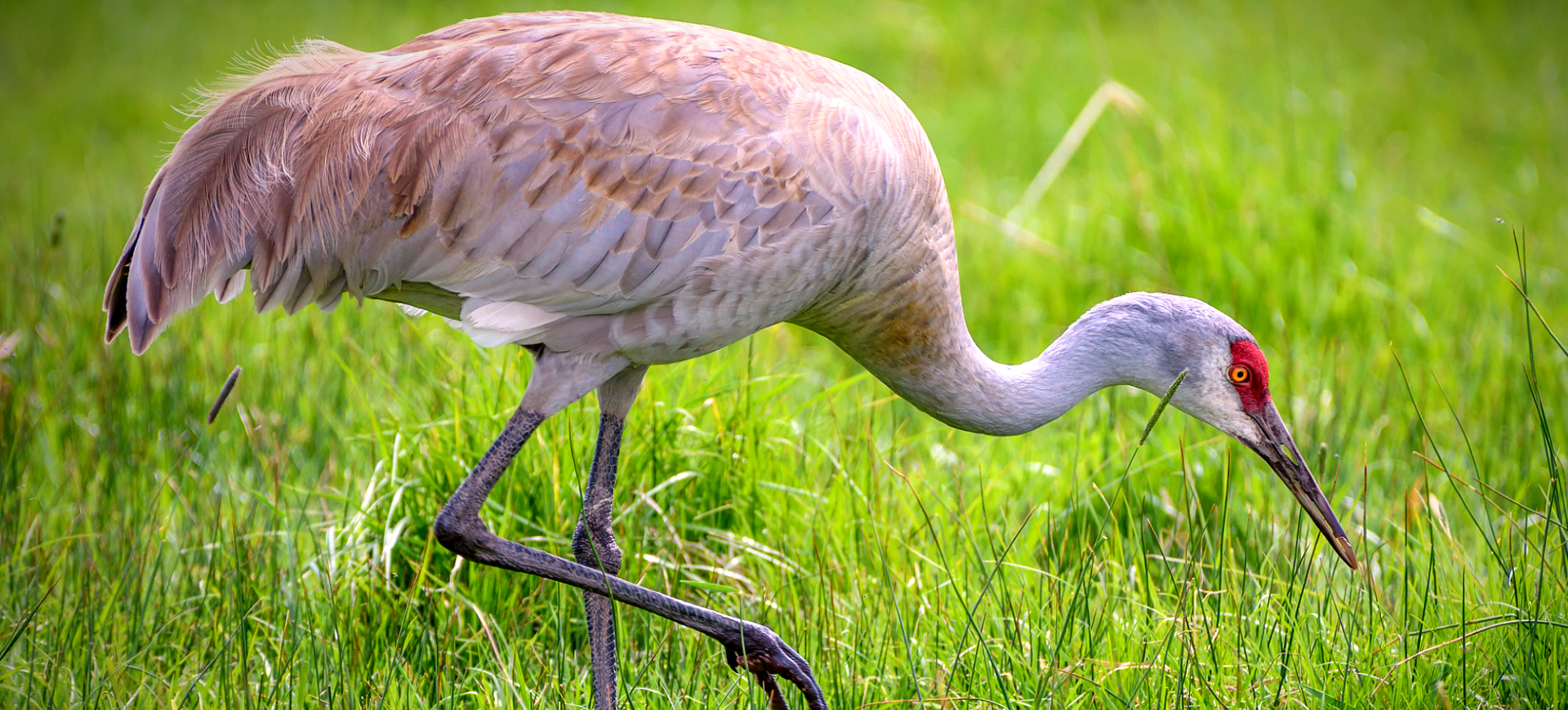Overview
The Wattled Crane (Bugeranus carunculatus) is a large bird species, one of the tallest flying birds, native to the wetlands of sub-Saharan Africa. It is the sole representative of the genus Bugeranus within the crane family. This elegant bird is distinguished by its white plumage, contrasted with dark gray wings and a bare red head crowned with a feathery, white topknot. Named for the fleshy wattles—long, flap-like, pendulous lobes—that dangle from the bird’s throat, the Wattled Crane has a unique aesthetic among its crane relatives.
The Wattled Crane inhabits freshwater marshes, wet grasslands, and floodplains, depending on these wetlands for feeding, breeding, and nesting. The species is often found near shallow water bodies, with an observed preference for tall emergent vegetation. These cranes are omnivores and exhibit a solid seasonal diet, feeding on aquatic insects, frogs, crabs, mollusks, snakes, small fish, and various plant materials during the wet season and grains, seeds, and tubers during the dry season.
Sadly, the Wattled Crane is under threat. With an estimated wild population of just a few thousand birds, the Wattled Crane is listed as Vulnerable on the IUCN Red List. The major threats to this species include habitat loss and degradation due to human activities, such as wetland drainage for agriculture and collisions with power lines. Despite the grim outlook, efforts are underway to protect and conserve this unique bird and its habitats.
Taxonomy
Kingdom
Phylum
Class
Order
Family
Genus
Species
Type
Physical Description:
The Wattled Crane is a tall, elegant bird. The species’ overall plumage is primarily white, except for the dark grey to black wings and tail. Its head is almost bare, with bright red skin and a distinctive white crown of fluffy feathers. The crane’s most striking feature is the two long, fleshy, and wrinkled wattles that hang down from its lower throat, giving the bird its common name.
Adult Wattled Cranes weigh between 14-18 lbs (6.3-8.2 kg), with males slightly larger and heavier than females. They are among the tallest flying birds, standing up to 5.9 feet (1.8 meters) tall. Their body length, from bill to tail, ranges from 3.3 to 4.3 feet (1-1.3 meters). These cranes have a notably large wingspan, ranging from 7.2 to 8.2 feet (2.2 to 2.5 meters), which aids in their long-distance flights.

Lifespan: Wild: ~30 Years || Captivity: ~40 Years

Weight: Male: 16-18 lbs (7.3-8.2 kg) || Female: 14-16 lbs (6.3-7.3 kg)

Length: Male: 3.8-4.3 ft (1.15-1.3 m) || Female: 3.3-3.8 ft (1-1.15 m)

Height: Male: 5.5-5.9 ft (1.7-1.8 m) || Female: 5.2-5.6 ft (1.6-1.7 m)

Wingspan: Male & Female: 7.2-8.2 ft (2.2-2.5 m)

Top Speed: 35 mph (56 km/h)
Characteristic:
Native Habitat:
The Wattled Crane is a wetland specialist found in sub-Saharan Africa’s marshes, wet grasslands, and floodplains. Their preferred habitats include areas of shallow standing water, flooded grasslands, and marshes with emergent vegetation, particularly during the breeding season. They are also found in areas with seasonal wet-dry cycles, adjusting their diet and behavior according to seasonal variations in habitat conditions.
Despite their reliance on wetlands, Wattled Cranes can also be found in agricultural landscapes during the dry season, particularly in areas with crop residues and waste grain. However, their continued survival in these environments is increasingly threatened by habitat loss and degradation, mainly due to agricultural expansion, intensification, and climate change.
Biomes:
Biogeographical Realms:
Continents:
Countries:
Diet:
Diet & Feeding Habits:
Wattled Cranes are omnivorous, feeding on a mix of plant matter and small animals. Their diet is known to be seasonally variable, reflecting the abundance of different food items in their wetland habitats throughout the year. During the wet season, they primarily forage in marshes, feeding on aquatic invertebrates like insects and mollusks, amphibians like frogs, and occasionally on small fish and snakes. They are also known to consume tubers and rhizomes of aquatic plants.
During the dry season, when their aquatic food sources are less abundant, Wattled Cranes switch to a diet of seeds, grains, and roots from terrestrial plants. This diet flexibility allows the Wattled Crane to survive in their dynamic wetland habitats, which can fluctuate significantly throughout the year regarding water availability and food abundance.
Mating Behavior:
Mating Description:
Wattled Cranes are monogamous, forming long-term pair bonds. During the breeding season, they engage in elaborate courtship displays that involve bowing, jumping, dancing, calling, and wing-flapping. These displays not only reinforce the bond between the pair but also serve to establish and defend their breeding territory.
The breeding season generally coincides with the peak of the wet season, providing the cranes with abundant food resources for raising their chicks. Wattled Cranes build large nests from wetland vegetation, typically on a floating platform or a mound in shallow water. The female usually lays two eggs, but only one chick typically survives to fledge. Both parents participate in incubation, which lasts for about 33-36 days, and in rearing the chick, which fledges after 90-100 days.
Reproduction Season:
Birth Type:
Pregnancy Duration:
Female Name:
Male Name:
Baby Name:
Social Structure Description:
Wattled Cranes are relatively social birds, often seen in pairs or small family groups. During the non-breeding season, they can form larger flocks, particularly in areas with abundant food resources. Despite their social nature, Wattled Cranes are also territorial during the breeding season, with pairs establishing and defending territories against intruders.
Their social interactions are complex and often involve a variety of vocalizations and body displays. These behaviors serve various functions, including pair bonding, territorial defense, and intent or emotional state communication.
Groups:
Conservation Status:
Population Trend:
The Wattled Crane is one of the world’s rarest crane species, with a population estimated at fewer than 8,000 individuals. The population is fragmented, with most birds found in Zambia and Botswana. Over the past few decades, the Wattled Crane population has experienced a significant decline, primarily due to habitat loss and degradation.
While Wattled Cranes can tolerate a certain level of human disturbance and can even benefit from some types of agricultural activities, intensive land-use changes, especially the conversion of wetlands to croplands, have led to substantial habitat loss and fragmentation. Moreover, changes in hydrological regimes due to water extraction and climate change pose significant challenges to their survival.
Population Threats:
The primary threats facing the Wattled Crane population are habitat loss and degradation, mainly due to agricultural expansion, wetland drainage, and changes in land use practices. The conversion of their wetland habitats into agricultural fields and other forms of land use has led to significant habitat loss and fragmentation.
Additional threats include collisions with power lines, illegal hunting, and human disturbance. Changes in water regimes due to dams and water extraction for irrigation also pose significant challenges, as they can disrupt the availability of their preferred habitats and food resources. Climate change is expected to exacerbate these threats by causing changes in precipitation patterns and increasing the frequency and severity of extreme weather events.
Conservation Efforts:
Conservation efforts for the Wattled Crane have focused on protecting and restoring their wetland habitats, raising public awareness, and conducting research to better understand their ecology and threats. Important Bird and Biodiversity Areas (IBAs) and protected areas have been established within their range, providing some habitat protection.
Additionally, international collaborations are in place to monitor populations and implement conservation strategies across the species’ range. Various non-governmental organizations are also involved in captive breeding and reintroduction programs to bolster the wild population. These efforts, combined with legal protection against hunting in many range countries, offer some hope for the Wattled Crane’s future.
Additional Resources:
Fun Facts
- Wattled Cranes are among the tallest flying birds, with adults standing up to 5.9 feet (1.8 meters) tall.
- The long, fleshy wattles that dangle from the bird’s throat, from which it gets its name, are unique among cranes.
- These cranes have a seasonal diet that shifts between aquatic organisms in the wet season and grains, seeds, and roots in the dry season.
- The Wattled Crane is one of the world’s rarest cranes, with fewer than 8,000 individuals estimated to exist in the wild.
- During courtship, Wattled Cranes engage in a “dance,” which includes bowing, jumping, and wing-flapping.
- Although they typically lay two eggs. Usually, only one Wattled Crane chick survives to fledge.
- Wattled Cranes are monogamous, forming long-term pair bonds.
- These birds can have long-distance flight, facilitated by their large wingspan of up to 8.2 feet (2.5 meters).
- Despite declining numbers, Wattled Cranes are protected by law in many countries where they reside.
- Conservation efforts for these birds focus on habitat protection and restoration, population monitoring, and public awareness campaigns.









